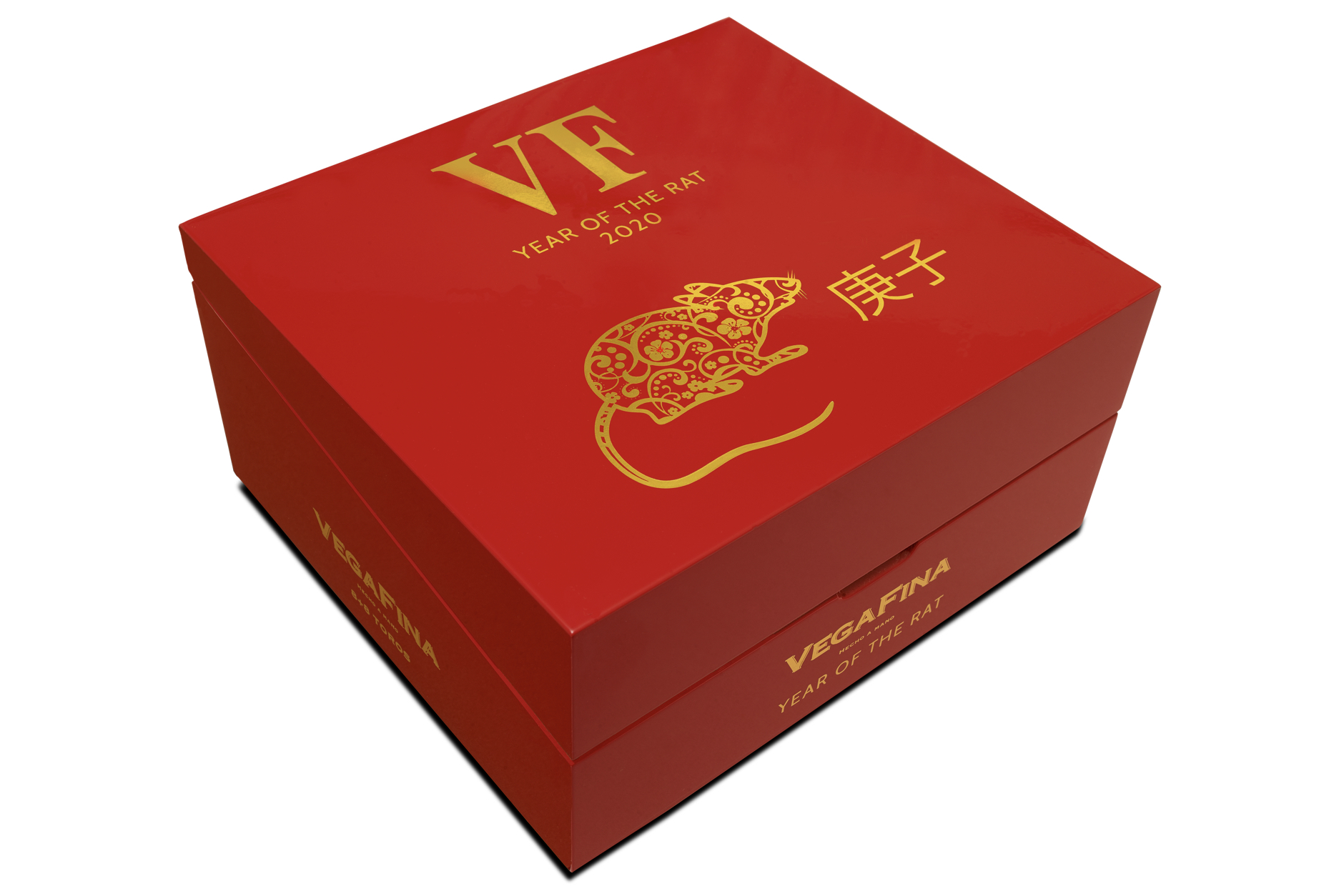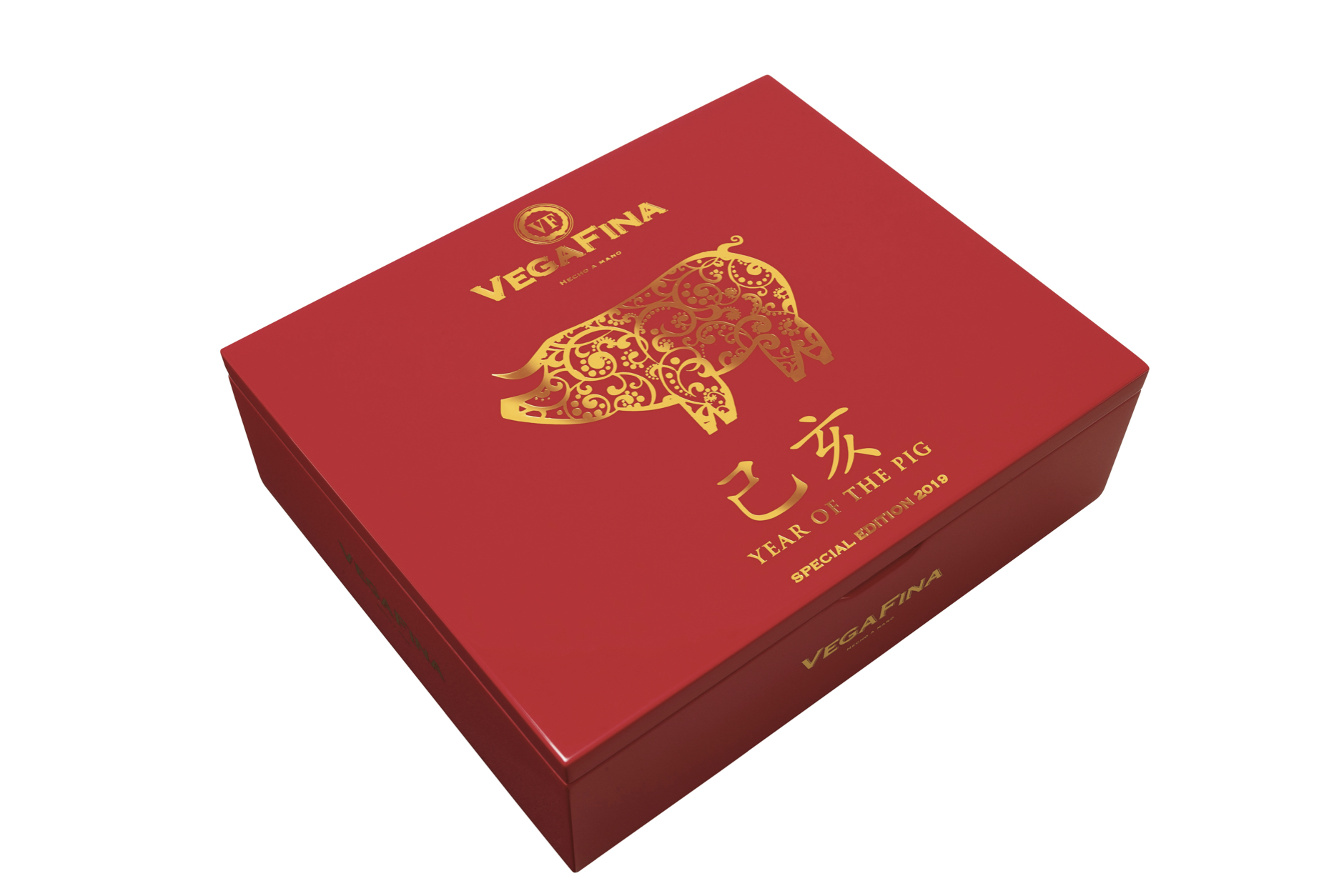If you’re looking for something with which to celebrate the Year of the Rat, you should almost certainly have no shortage of viable options.
One cigar that is being released for the new year, however, won’t be available to U.S. cigar smokers, at least via U.S. retailers.
That cigar is the VegaFina Year of the Rat from Tabacalera S.L.U., the Spain-based premium cigar company that falls under the Imperial Brands, plc umbrella.
It is a 5 9/10 (150mm) x 52 toro that uses a habano 2000 wrapper leaf of undisclosed origin over a blend of Dominican and Nicaraguan fillers. While it is a fairly standard toro vitola, it is capped off by a tightly rolled twist of tobacco that is—appropriately—referred to as a rat tail.
The cigar will primarily be distributed in Spain, where it is priced at €8 per cigar, or just under $9 depending on the most recent exchange rate. A total of 4,100 boxes of 16 cigars have been produced by Tabacalera de García in La Romana, Dominican Republic, making for a total run of 65,600 cigars. Of those 4,100 boxes, 1,500 have been designated for Spain.
As would be expected, the packaging is flush with red and gold, colors that are associated with Lunar New Year celebrations. Specifically, in Chinese culture, red symbolizes good fortune and joy; while yellow or gold symbolizes wealth. Furthermore, the cigars are divided into two rows of eight, a nod to one of the luckiest numbers in Chinese culture, as it sounds similar to the word for fortune in Mandarin.
It is the third year that the brand has celebrated the Lunar New Year, joining the Year of the Dog from 2017 and the Year of the Pig from 2018.
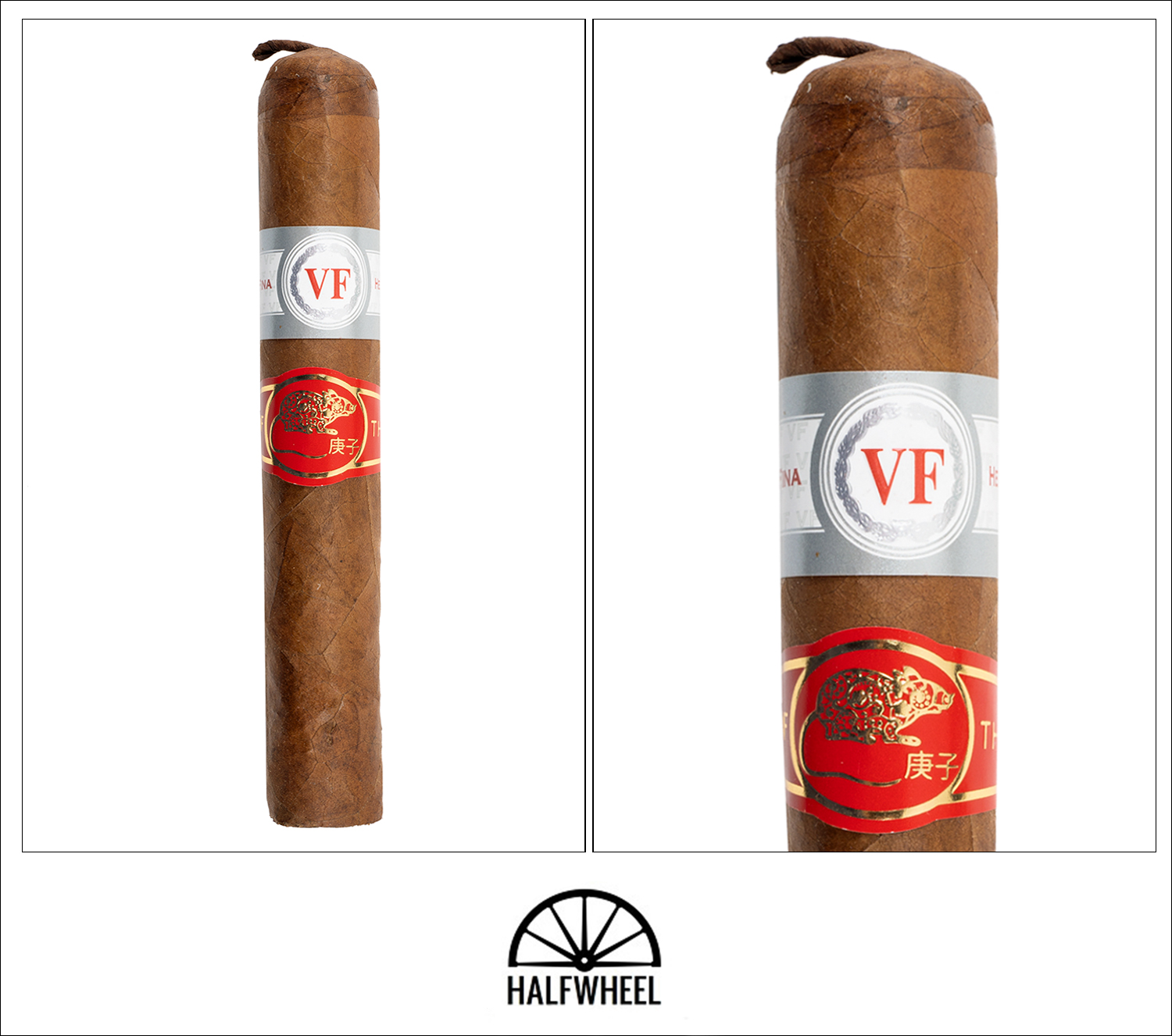
- Cigar Reviewed: VegaFina Year of the Rat
- Country of Origin: Dominican Republic
- Factory: Tabacalera de Garcia
- Wrapper: Undisclosed (Habano 2000)
- Binder: Undisclosed
- Filler: Dominican Republic & Nicaragua
- Length: 5 9/10 Inches
- Ring Gauge: 52
- Vitola: Toro
- MSRP: $8.80 (Box of 16, $140.80)
- Release Date: December 2019
- Number of Cigars Released: 4,100 Boxes of 16 Cigars (65,600 Total Cigars)
- Number of Cigars Smoked For Review: 3
My eyes might be playing tricks on me, but the VegaFina Year of the Rat has a gorgeous reddish brown hue to the wrapper that really catches my attention. It’s almost an orange-hued shade, though not as distinct as the wrapper leaf found on Espinosa’s Laranja, for instance. It has a bit of oiliness to it, noticeable more by the sheen of the leaf than how it feels in the fingers, but both will confirm. The cigar is rolled well, firm but with a bit of spongey give that I tend to think of from Cuban cigars. There’s a bit of variance in the wrapper leaf’s color that reveals the seams and the lines of the head, but I’ll take that over an uneven roll. The foot offers a bright, light woodiness, some dehydrated red apple, and a fresh sweetness that is very gentle yet engaging on the olfactory nerves. One sample also contributes an aroma of cold chocolate milk, decidedly different than the other smells but by no means out of place. The cold draw is on the firm side, with flavors a bit more concentrated than what I got in the aroma. The sweetness from the apple isn’t as prevalent but the flavor is definitely there, while the wood moves towards a supporting flavor more than a leading one. There’s also a bit of wheat dinner rolls to be found.
The first puffs from the VegaFina Year of the Rat deliver a smoke that is soft in texture, slightly sweet in flavor and very palatable due to a lack of overt pepper or bold flavors. The dehydrated red apple note comes back almost immediately through some ambient smoke getting into the nose, and while not dominant in a retrohale, is certainly part of the mix along with a bit of very subtle white pepper. There’s also a bit of damp cedar that dries out in the mouth and leaves a finish that alternates between dry cedar and a dense wheat roll. While the draw might be considered a touch open in the first third, it helps the cigar generate good amounts of smoke, which seems fitting for this relatively thick cigar. The cigar’s quick burn rate and light profile suggest that thinner tobaccos are used in the profile, and through the first third I get plenty of flavor with little to no nicotine strength, further suggesting the absence of ligero.
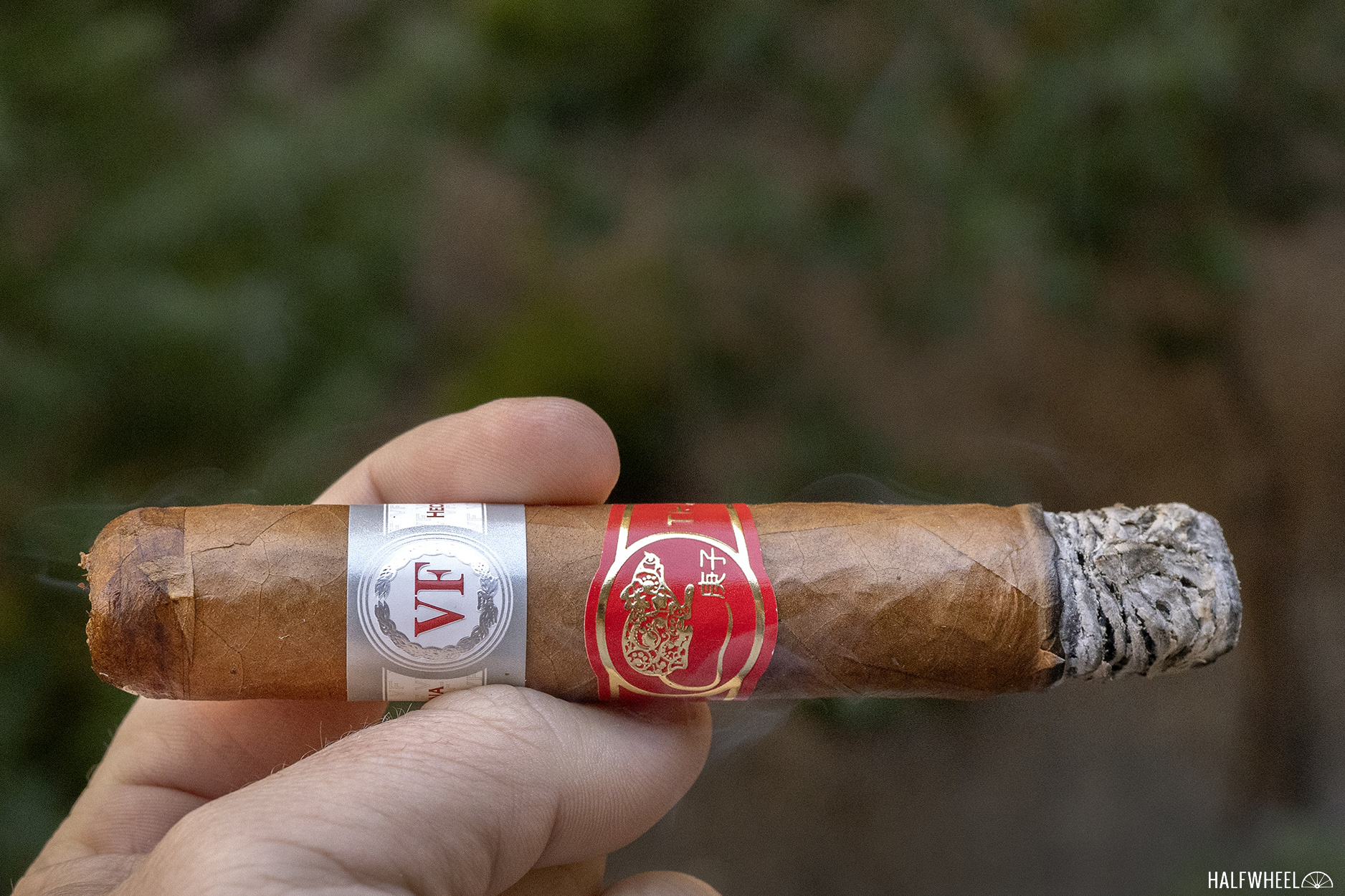
A retrohale near the start of the second third reveals that the cigar has picked up a sharp white pepper, and while not overpowering it isn’t shy about making its presence known. That sensation hits the palate as well, as not long after the first clump of ash is knocked off, the profile gets a bit more assertive. The bread notes are still there to frame the pepper, though they have largely gotten pushed to the sides of the tongue and occasionally pick up a bit of baking spice accent, including a powdery texture starting to emerge in the smoke. The cedar has morphed a bit and is delivering a tangy flavor to the rest of the tongue, though it’s not as clean or precise of a flavor as it was earlier. The progression of flavor tops out around the midway point, and the cedar seems to be starting to come around, which would seemingly be the most needed thing to straighten out the profile at this point. The draw tightens up just a bit at the end of the final third as the flavor softens out a bit more but it feels like it is also getting a bit heavier and denser on the palate. Flavor strength now sits at medium with occasional steps above that, body is medium and building, while strength is minimal.

If there was a portion of the VegaFina Year of the Rat that engages and challenges the palate to dissect what is being offered, it’s the start of the final third. There’s a transition that touches on dry firewood, wheat bread among other types, and sprinkles of black pepper that give the cigar more strength as well as a bigger flavor and sensation on each puff and retrohale. That flavor continues to evolve and develop throughout the final third, getting thicker and more concentrated, which in turn gives the taste buds more to process. The bread gets toasty and the firewood picks up a bit of char, an enjoyable progression until it isn’t, a point that will vary from palate to palate but which had me a bit fatigued by the time there was just under two inches left in the cigar. Thankfully the progression slows, eventually stopping with about one inch left, though there is just a touch of char left in the profile. The cigar continues to burn exceptionally well with an even burn line, smooth draw and plenty of smoke production. Things come to a close with a vibrant flavor that sits just north of medium, body is medium, and strength is a few ticks below that.
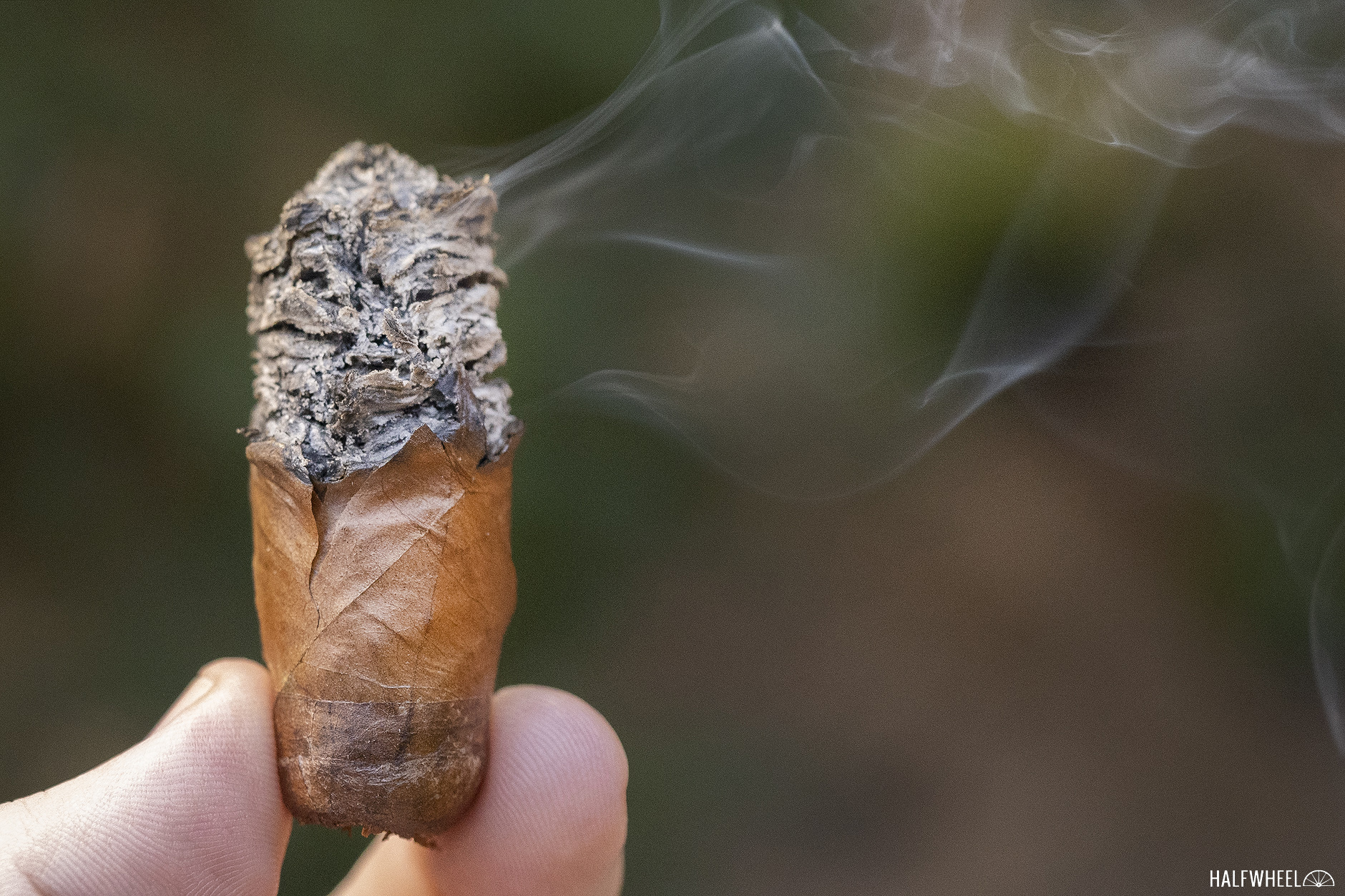
Final Notes
- Beyond VegaFina, Davidoff, Drew Estate, Habanos S.A. and Maya Selva have Year of the Rat releases.
- In the case of the Liga Privada Year of the Rat, it is a rerelease of a 2016 cigar that was made for a Drew Estate-sponsored cigar lounge at the BB&T Center in Sunrise, Fla., the venue that is home of the NHL’s Florida Panthers. The Panthers became associated with rats during the 1995-96 season, as right winger Scott Mellanby killed a rat in the locker room with his stick prior to the team’s home opener, then went on two score two goals with the same stick. That inspired goaltender John Vanbiesbrouck to coin the term “rat trick,” a play on the familiar term hat trick that describes a player scoring three goals in the same game. Fans quickly took to the rat trick name, throwing plastic toy rats onto the ice to celebrate goals, a trend that continued into the playoffs when fans threw thousands of the items onto the ice and led to the NHL making a rule change that allowed referees to penalize the home team if their fans did something to create an undue delay in game action by throwing objects onto the ice.
- I’m going to take a bit of issue with the description of the cap as a rat tail; it would seem that a proper interpretation of that term would require something a good bit longer.
- Then there’s the other kind of rat tail. I’d love to see a cigar that pay homage to that.
- News that VegaFina and Great Wall Cigar would be collaborating on a cigar called VegaFina Fusion Edition caught my eye in late January. I’m definitely intrigued to see where the cigar will be made and what kind of tobacco will be used in it.
- I didn’t feel much in the way of nicotine strength, something that seems in line with the VegaFina brand’s general profile. This is certainly not a VegaFina that is out of the company’s general profile in terms of strength.
- The cigars for this review were provided by Tabacalera S.L.U.
- Final smoking time was one hour and 40 minutes on average.
VegaFina has become a favorite under-the-radar brand of mine, a fact that was cemented when the VegaFina Robusto Extra PigTail Añejado 7 Años was released in 2017. The VegaFina Year of the Rat isn't that cigar, but for the most part, it is still a very enjoyable cigar. The progression is a bit more vibrant than I think of from a VegaFina, and at times that progression takes the cigar into places where things fall out of balance, particularly when it comes to the cedar note that emerges in the second third of the cigar. The ingredients for a very solid, maybe even near-great cigar seem to be present, yet the combination just isn't quite there. That doesn't mean it's not worth smoking now if you can get the cigar, but what intrigues me most is the possibility that this could age, mellow and evolve into something appreciably better than where it stands now.

